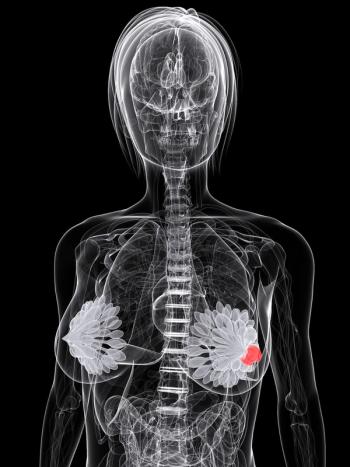
Representation of Women in Oncology Faculty Increased Over Time While Underrepresented Racial/Ethnic Groups Remain Low
In radiation oncology and medical oncology, representation of female faculty has increased from 1970 to 2019, and representation of individuals from historically underrepresented racial and ethnic groups in medicine remains low.
Representation of female academic faculty members within radiation oncology and medical oncology departments has increased over time, although representation of racial and ethnic groups that have been historically underrepresented in medicine (URM) continue to remain low, according to results from a cross-sectional analysis published in JAMA Oncology.
Using data from the Association of American Medical Colleges (AAMC) to assess the full-time faculty roster from 1970 to 2019, investigators reported that in 1970, the radiation oncology department had a total of 119 total faculty member, 8.4% of whom women and 1.7% URM. Additionally, the medical oncology department had 87 total faculty members, 12.6% of whom were women and 8.0% were URM. In 2019, of 2115 total faculty in the radiation oncology department, 29.1% were women and 5.1% were URM. In the medical oncology department, there were a total of 819 faculty members, with 38.1% and 5.7% being women and URM, respectively.
Compared with non-URM women, the population of whom increased per decade by 0.4% (95% CI, 0.25%-0.80%) in radiation oncology and 0.7% (95% CI, 0.47%-0.87%) in medical oncology (P <.001). Notably, representation of URM women significantly increased by 0.1% (95% CI, 0.005%-0.110%; P <.001) per decade in radiation oncology, with a non-significant increase medical oncology by 0.1% (95% CI, −0.03% to 0.16%; P = .06).
“As academic departments bear primary responsibility for recruiting and educating our future oncology workforce, it is critical that academic faculty are inclusive of individuals who reflect the US population,” the investigators wrote. “Overall, our results indicate that, despite marginal improvements, more progress is needed to recruit and retain a diverse workforce in both radiation oncology and medical oncology, as the current academic workforce still does not reflect the diversity of the general US cancer population nor of the medical school population, particularly regarding URM status.”
Per AAMC definitions, the URM group included Black, Hispanic, and Indigenous individuals. Long-term trends over 5 decades of faculty proportions focused on sex, URM status, and faculty rank. Since yearly changes in faculty were small, the research focuses on change by decade.
When examining diversity by faculty rank, findings indicated that the proportion of women among faculty in radiation and medical oncology departments increased more than the proportion of URM individuals in different ranks, although investigators noted a higher proportion of women faculty members who had lower academic rank than men.
Looking at radiation oncology residency applications (30%), residents (30%), and faculty (29%) from 2019, women had less representation than medical oncology fellowship applicants (46%), fellows (48%), and faculty (38%). Across all clinical departments in 2019, department chairs had the lowest representation of women (17%).
For URM individuals, the proportion of medical school graduates was lower (11%), as was the proportion of radiation oncology residency applicants (13%) and medical oncology fellowship applicants (10%). URM representation among radiation oncology (5%) and medical oncology faculty (5%) was lower than URM representation across all clinical department chairs (9%).
“A key step is to further understand the barriers and shortcomings of current approaches to recruitment and retainment of individuals who are underrepresented in the academic oncology workforce to inform future efforts, along with deliberate investment into career development and advancement of these traditionally marginalized groups,” the investigators concluded.
Reference
Kamran SC, Niemierko A, Deville C Jr, Vapiwala N. Diversity trends by sex and underrepresented in medicine status among US radiation and medical oncology faculty over 5 decades. JAMA Oncol. Published online December 9, 2021. doi:10.1001/jamaoncol.2021.6011
Newsletter
Stay up to date on recent advances in the multidisciplinary approach to cancer.
















































































